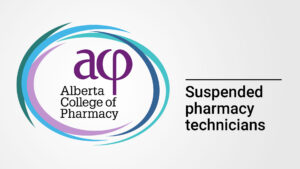
This is the first in a series of articles to illustrate how to critically think and reflect upon practice problems. Following this introductory article, future articles will discuss what types of summary resources and critical appraisal tools can be used to help in decision making and how they can be practically applied. We’ll also explore how can you communicate your decision to your patient or other healthcare professionals.
Introduction
An engaged pharmacy professional is one who embraces the full scope of their practice and, through the establishment of meaningful, professional relationships with their patients and colleagues, demonstrates the tenets of professionalism established by ACP. These tenets include taking a person-centred approach to their professional service, using good judgement, collaborating, leading, having a strong set of values, and being an active learner.
Being an active learner involves critical self-reflection to identify areas of growth in which learning opportunities can be pursued to keep knowledge and professional skills up-to-date and to evolve clinical practices.
Applied to professional learning, critical reflection promotes examining current knowledge in relation to current scope of practice, identified learning goals, and considerations for what new learning opportunities may need to be pursued. Critical reflection also means understanding our personal and professional limitations, in terms of knowledge, skills, and attributes. Recognizing these limitations may lead to opportunities to collaborate with colleagues or other healthcare professionals, or to refer patients to the appropriate healthcare professional.
When identifying ideas or areas for learning, pharmacy professionals should resolve if they can and should proceed with implementing a new idea.
Application of the Critical Reflective Pathway
If the new idea falls within their scope of practice, pharmacy professionals will need to figure out what knowledge and/or skills they will need to enter this new area of practice, and who they may need to collaborate with. Consider the following examples which would all require critical reflection:
- A pharmacist is approached by their regular patient to provide OAT services but has no experience in this area.
- A pharmacist wants to start providing COVID-19 point-of-care testing for asymptomatic patients.
- A pharmacist is approached by a patient needing treatment for severe Crohn’s disease.
Pharmacy professionals can then create a plan of action where they locate the necessary courses, colleagues, or other avenues to obtain the necessary knowledge and/or skills.
Using the Critical Reflective Pathway
- For their plan of action, pharmacy professionals can use the Critical Reflective Pathway by reflecting on and answering the following questions: Identify what I want to learn
- Is it a new role I would like to fulfill and/or an activity I would like to perform?
- Critically reflect
- Why do I want to do this?
- How does it fit within my scope of practice?
- How does it fit within ACP’s Code of Ethics and the Standards of Practice for Pharmacists and Pharmacy Technicians? How does it contribute to person-centred care?
- From this analysis,
- can I and should I proceed with the learning and implementation of this new role and/or activity?
- am I the healthcare professional that is best suited for this role and responsibility or for this activity?
- is it supported in my practice setting (i.e., legislation, policies and procedures, evidence-based research, collaborative relationships)?
- Do I have the necessary knowledge, skills, and attitudes/aptitudes to implement it into practice?
- Plan
- Which learning sources will I access?
- Critically evaluate the various learning sources.
- Select the relevant sources.
- Which colleagues, co-workers, and/or healthcare professionals will I collaborate and work with?
- Who will coach or mentor my skill development?
- Gain knowledge and practice
- Take courses, read peer-reviewed literature, look at websites, and written sources.
- Talk and collaborate with colleagues, co-workers, and/or other healthcare professionals.
- Practice the newly acquired skill with supervision, then practice on your own, and then be evaluated.
- Learn from mistakes and problem solve; use good professional judgement.
- Recognize personal and professional limitations.
- Recognize and learn when it is necessary to collaborate with other health care professionals and when it is necessary to refer patients to them.
- Contemplate risks
- Have I considered the individuals I will care for in terms of their safety, rights, and privacy?
- Do I know the risks involved with what I am implementing?
- What could go wrong and am I prepared to handle/respond to the situation?
- Implement
- Implement the new knowledge and/or skills fully into professional practice.
- Regularly reflect
- How am I doing?
- Which colleagues, co-workers, and/or healthcare professionals will I continue to collaborate and work with?
- Which healthcare professionals will I facilitate connection between for patient referrals?
- Identify areas where growth or improvement is needed.
- Continue to take courses or find learning sources to support evolvement of knowledge, skills, and attitudes/aptitudes in the area.
Upon execution of their plan of action, pharmacy professionals have several more opportunities to critically reflect on what they have learned and practise in their day-to-day clinical work. They can collaborate with colleagues, co-workers, and other healthcare professionals; practise their skills on their own and with others; and legitimize the knowledge they gained with what they currently know through conversations and reflection. As they begin to implement their knowledge into their practice, they will have opportunities to self-evaluate how they are doing either through making mistakes and learning from them or solving problems as they arise. Throughout this learning process, other areas for growth may be identified and further learning explored.
The Critical Reflective Pathway aligns with the CCP program and presents an excellent opportunity for pharmacy professionals to implement learning into practice. Pharmacists and pharmacy technicians are encouraged to document their learning into learning records and then into an implementation record.
Watch future editions of the Link for more on creating a plan to access, evaluate, and use source material as part of your critical reflection.




